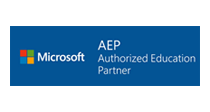Accounting and Finance
IFRS in Saudi Arabia: Compliance with SOCPA
Why Attend
Whether you work for a listed company in Saudi Arabia that has already adopted International Financial Reporting Standards (IFRS) or a non-listed company in the process of transition to IFRS, this course will provide you with the right tools to be on the top of this change in order to prepare error-free IFRS financial statements.
For first-time adopters, this course will help you remain in compliance with requirements of the Saudi Organization of Certified Public Accountants (SOCPAs) while furthering your understanding of the transition’s requirements. It will give you the knowledge and skills to prepare for such a transition while you exchange knowledge with other participants attending from various organizations operating in Saudi Arabia who can share their actual experience and the challenges they faced with the transition. For those who work in companies that have already adopted IFRS, with this course you will recognize the key differences between the two standards and gain the knowledge and practical guidance needed to use IFRS and stay up to date with its newest standards and changes.
Course Methodology
The course uses a mix of interactive techniques, such as brief presentations by the consultant, application of theories presented by the consultant and group exercises to exchange experience and apply knowledge acquired throughout the course.
Course Objectives
By the end of the course, participants will be able to:- List major differences in financial accounting and reporting between International Financial Reporting Standards (IFRS) and accounting standards generally accepted in the Kingdom of Saudi Arabia (Saudi GAAP)
- Recognize the effect of the transition from Saudi GAAP to IFRS on their company’s financial statements and identify mandatory exceptions and optional exemptions from this transition
- Prepare financial statements for entities adopting IFRS for the first time
- Explain how to account for assets, liabilities, equity, revenues and expenses under both IFRS and Saudi GAAP
- Apply the different accounting methods allowed under IFRS and Saudi GAAP to multiple situations
- Explain the most recent updates on existing IFRS and evaluate the effect of newly issued standards on their organization
Target Audience
Staff accountants, senior accountants, chief accountants, accounting managers, controllers, internal auditors, and other professionals in the accounting and finance functions.
Target Competencies
- Financial accounting and reporting
- Comparing financial standards
- Applying differences between IFRS and Saudi GAAP
- Performing gap analysis
- Managing transition process
- Applying IFRS updates

Course Outline
- Introduction and key financial statements
- Financial reporting standards setters:
- Role of International Accounting Standards Board (IASB)
- Saudi Organization for Certified Public Accountants (SOCPA)
- Update on future milestones on road to transition
- Comparison of presentation and classification of financial statements:
- Statement of financial position
- Statement of income and comprehensive income
- Statement of cash flows
- Statement of changes in owners’ equity
- Financial reporting standards setters:
- IFRS 1: First time adoption of international financial reporting standards
- Entities subject to IFRS 1
- Opening IFRS statement of financial position
- Mandatory exceptions from retrospective application
- Optional exemptions from retrospective application
- Deemed cost option: measuring assets at fair value
- Comparison of current and non-current assets
- Cash and cash equivalents
- Inventory costing methods
- Valuation at initial recognition
- Subsequent measurement
- Inventory cost flow assumptions
- Property, plant and equipment
- Cost model versus revaluation model
- Component depreciation
- Treatment of idle assets
- Assets received as part of a grant
- Intangible assets
- Cost model versus revaluation model
- Incorporation and start-up costs
- Research and development costs
- Investment property
- Cost model versus fair value
- Subsequent depreciation
- Capitalizing borrowing costs
- Treatment of decommissioning costs
- Impairment of long lived assets
- Comparison of liabilities and equities
- Criteria of recognition and disclosures
- Provisions
- Contingent liabilities
- Contingent assets
- Other comprehensive income components: new to SOCPA
- Criteria of recognition and disclosures
- Accounting changes and discontinued operations
- Treatment of changes in accounting policies
- Changes in estimates
- Correction of prior period errors
- Initial recognition for discontinued operations
- Subsequent measurement for discontinued operations
- Newest standards introduced
- IFRS 9: Financial instruments
- Classification of debt and equity investments under IFRS 9
- Fair Value Though Profit and Loss (FVTPL)
- Fair Value Through Other Comprehensive Income (FVTOCI)
- Amortized Cost (AC)
- How to determine a business model for classifying financial assets
- Initial and subsequent measurement
- Transfer between categories
- Impairment of financial assets under IFRS 9
- Classification of debt and equity investments under IFRS 9
- IFRS 15: Revenue from contracts with customers
- Step 1: Identify the contract with the customer
- Step 2: Identify the performance obligations in the contract
- Separate goods from services
- Step3: Determine the transaction price
- Effect of time value of money
- Accounting for variable consideration
- Step 4: Allocate the transaction price to the performance obligations in the contract
- Step 5: Recognize revenue when the entity satisfies a performance obligation
- Separate performance obligation satisfied at a point in time from performance obligation satisfied over a period of time
- IFRS 16: Leases
- Reasons for the transition from IAS 17 to IFRS 16
- Recognition exemptions: expensing lease payments
- How will the lease of small value items be affected
- Identifying a lease transaction
- Separating components of lease contract
- Accounting by lessees
- Accounting by lessors
- Effective date and transition
- IFRS 9: Financial instruments
REQUEST CALL BACK
Would you like to speak to one of our consulting advisers over the phone? Just submit your details and we’ll be in touch shortly.














